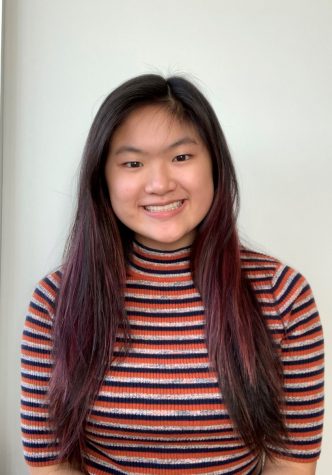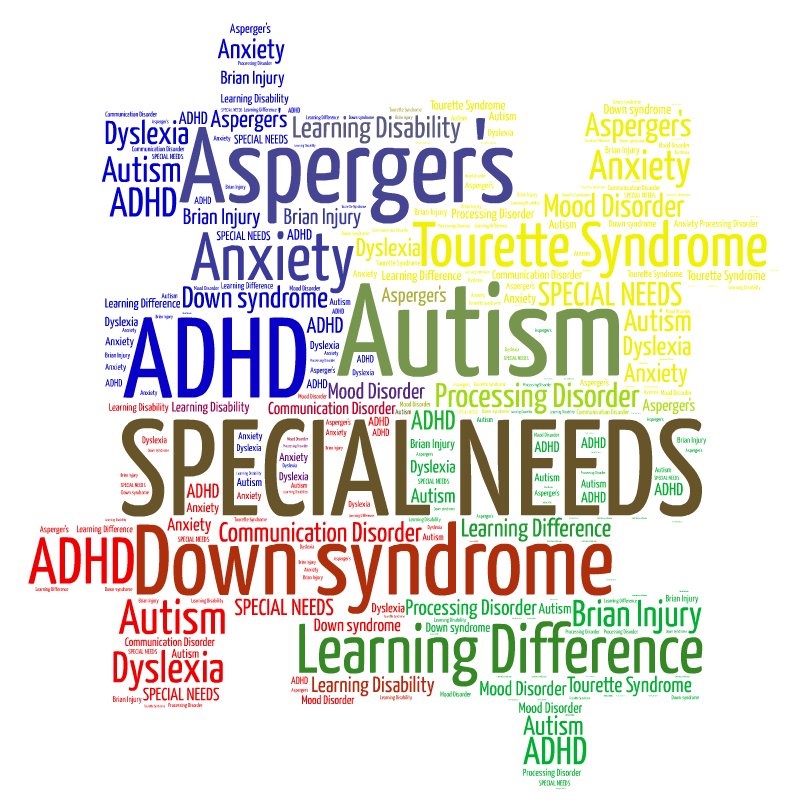Special Education
“See the able, not the label” – NAI
Neurobiological factors altering brain functions in a way it affects one or more cognitive processes related to learning can cause learning disabilities. In the simplest terms, it means the processing problems can interfere with learning basic skills such as reading, writing, and math or higher-level skills such as organization, time management, short or long term memory, and attention span.
Most people believe learning disabilities only have an effect on how well people do in school. It also affects their everyday life too. For example, someone with ADHD might miss social cues.
People with learning disabilities still face negative attitudes, exclusion, and discrimination from people in their lives. There is a stigma that people with learning disabilities aren’t as capable and productive as non-disabled people. To prevent this, we have to change our view by educating ourselves with indirect or direct contact. People can break this stigma by indirect contact through videos, books, and images that contradict it. They can also directly interact with learning disabled people through programs, such as the Buddy club we have here.
Here are some examples of learning disabilities. Dyscalculia affects a person’s ability to understand numbers and learn math facts. Dysgraphia affects a person’s handwriting ability and fine motor skills. Dyslexia affects reading and related language-based processing skills.
The most common time and place to be diagnosed with signs or symptoms of learning disabilities are during the school year since teachers are able to recognize if a student has complexities with academic skills. Some are evaluated in college, universities, or even in the workforce as an adult. Other individuals with learning disabilities never know the reason why they struggle at school, their jobs, or with their relationships with family and friends.
In each age group, there are different signs of learning disabilities. Problems with pronouncing words, rhyming, learning the alphabet, following directions, controlling writing utensils, tying shoes are some examples of a preschooler having a learning disability. For elementary kids, they have trouble with comprehending basic math concepts, blending sounds to make words, picking up new skills, spelling words frequently and telling time. In middle school, teachers might witness learning disabled kids having difficulty with reading comprehension or math skills, open-ended test questions or word problems, organizational skills, following classroom discussions, expressing thoughts aloud, neat handwriting, and avoids reading aloud.
If the parent sees any of these conditions in his/her child, they can get his/her child evaluated by a qualified professional. The first place to start is to get to the child’s school to get tested. If the school doesn’t provide this evaluation, they can get his/her child diagnosed with learning disabilities at a clinical psychologist, school psychologist, child psychiatrist, educational psychologist, developmental psychologist, neuropsychologist, psychometrist, occupational therapist, and speech and language therapist.
A learning disabled student can be provided with special education. Special education is the practice of educating students based on their individual differences and special needs. The NA district has a special education for students with learning disabilities.
I had a chance to interview with one of NAI’s special education teachers. This interview explains more in-depth on how special education works, and what it provides students with learning disabilities.
Interview about Special Education:
NAEye: “What is your position in contributing to special education?”
Special Education Teacher: “As a special education teacher, I am required to assess students, analyze the data to develop plans, support and advocate student needs, monitor progress, collaborate with a team of professionals, and communicate with parents on a regular basis.”
NAEye: “What’s the biggest challenge/reward in working with students who require special education?
Special Education Teacher: “The biggest challenge can be the perspectives of others. Sadly, the “label” is a barrier that people struggle to overcome. It has been said several times at NAI, ‘See the able, not the label.’ Sometimes society is the greatest obstacle for students.
“I LOVE seeing the progress students make towards their goals. Some make leaps and bounds, while others might grow a bit, but it’s the effort that makes me smile! My own sibling had an IEP and a GIEP, and she is a boss and incredibly successful in her career.
“I remind everyone that we all have strengths and weaknesses, but it’s how we address those hurdles that make us who we are. I’ve shared the facts that several celebrities, innovators, and leaders of the world have been labeled sometimes, but it didn’t define them as not being capable to succeed/soar.”
NAEye: “What programs does the NA School District provide for people with learning disabilities?”
Special Education Teacher: “Students may receive direct instruction for Reading, English, and Math in the Learning Support classrooms. Adaptations and/or alternative curriculums are developed for content area and special area subjects within the general education environment. Additionally, there are classes addressing Executive Functioning needs and supports for skill development where students meet with teachers and work on skills, but could be enrolled in the general education program for all classes.”
NAEye: “What kinds of specialist teachers are at NA, and what are their jobs?
Special Education Teacher: “There are several specialists on top of special education educators (learning support, emotional support, life skills, Autistic Support, etc.). The list includes Speech and Language Therapists, Occupational Therapists, Physical Therapists, Vision Support, Hearing Support, Social Work services, Nursing Services, behavioral supports, OVR services, and Mental Health supports.”
NAEye: “What difficulties have COVID-19 presented to students with learning disabilities and programs? What can/can’t the program do because of COVID?”
Special Education Teacher: “The struggle is the same for all…motivation. Getting the drive to log in and participate can sometimes be the first battle. I know also that seeing students in-person is easier to monitor and continue to build a healthy student/teacher relationship. There are a great number of emails I receive, send, and (create) calendar invites for one-on-one Blackboard Collaborate sessions. Sometimes that is what makes up the majority of my day. However, I often do not hear back from students, so connecting is the first battle.
“Most programs can be provided. Students with paraprofessional supports do have paraprofessionals in their virtual classrooms, but there are obstacles that are different for each person.”
NAEye: “How do teachers implement students with learning disabilities in a classroom with kids who don’t have learning disabilities?”
Special Education Teacher: “Just like teachers would with any other student, we let students know we care and that we are there to support them. Sometimes, students just need someone to talk with or vent to. Students are just as unique as teachers! What works for one person might not work for another. We try to also be available for students. During school, students stop in and see me during their study halls, in class, or sometimes even at lunch when they need support. They know that most teachers will bend over backward to support any student in any class.”
NAEye: “What areas does the NA School District need to improve on to provide the best educational opportunities for students with learning disabilities?”
Special Education Teacher: “I don’t really have specifics that would apply for students other than hiring a transition coordinator for both NAI and NASH to provide additional supports on top of what special educators already provide. Transition coordinators would be able to further assist in career exploration activities. They’d help with work or job preparation training. Such supports could be providing opportunities in the school and community for job shadowing, onsite work training, and work/study placement. Sometimes special educators are limited due to the other in school/job requirements and schedule conflicts.
NAEye: “Depending on the disability, what do the teachers have to do for a learning disability student in a classroom? Is it a new method of teaching?”
Special Education Teacher: “For each and every student it varies. IEP stands for Individualized Education Plan. Levels of intervention are based on student needs and are determined by the IEP team. Each student has an equal opportunity for success at school. For some classes, they require the same curriculum as their peers, but maybe slower pacing and more differentiated instruction opportunities. Some just benefit from smaller grouping and more frequent checks. For others, they require scaffolded supports where content is broken up into chunks, and students are provided with a concrete structure for the skill(s).
“Continuing education and learning new techniques occurs for all educators. Yes, some strategies are newer, while other foundational techniques and methods have been implemented for years.”
I hope this information provides people with a better understanding of students with learning disabilities. For those who have learning disabilities, I wanted to let you know you are not alone. There are many who are in a similar situation, and you should not be embarrassed about it. It’s a part of who you are. Everyone has challenges they need to overcome.

Dana is a freshman, and it is her first year as a writer for the NA Eye Newspaper. She can't wait to try out the different positions for the newspaper,...


